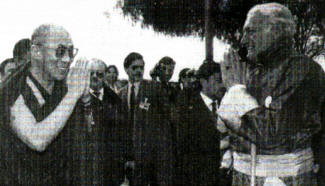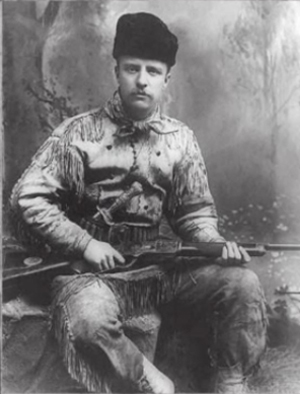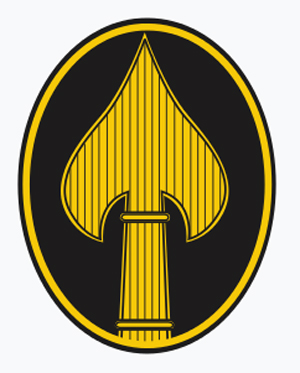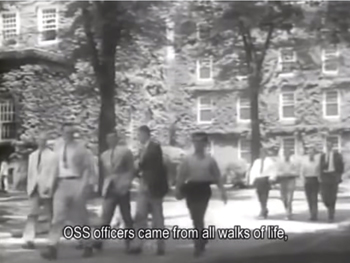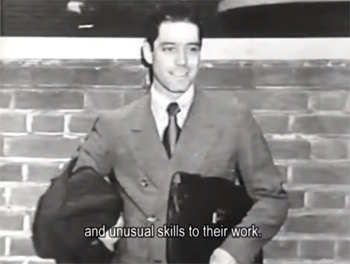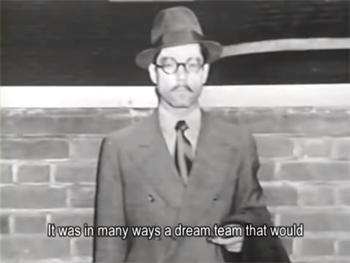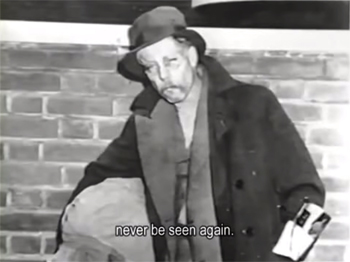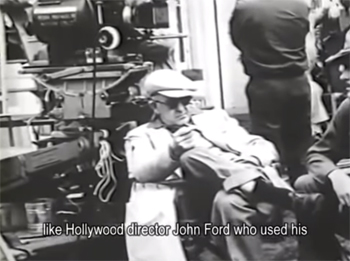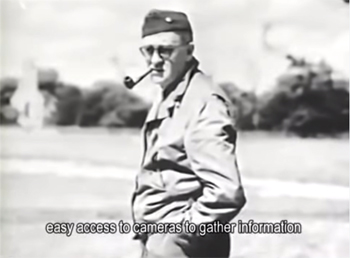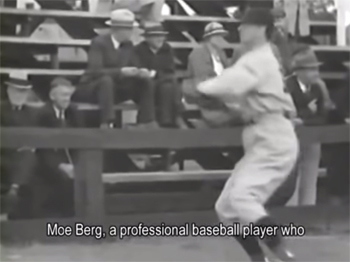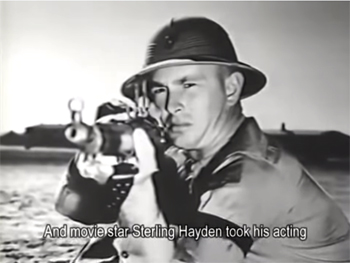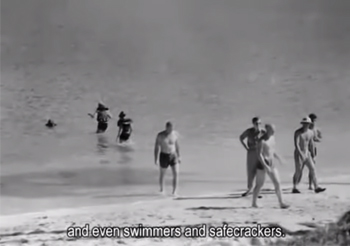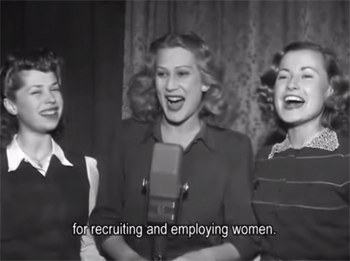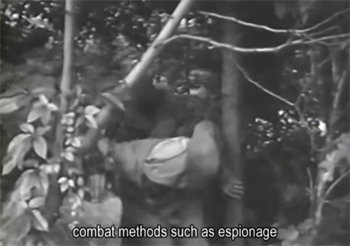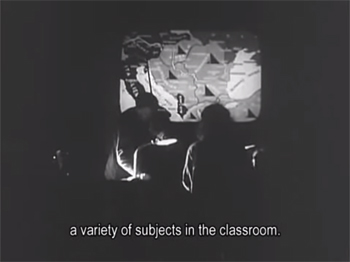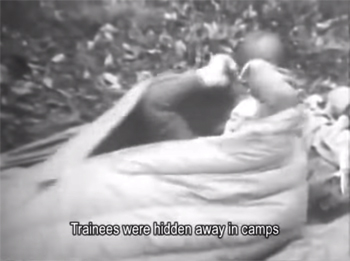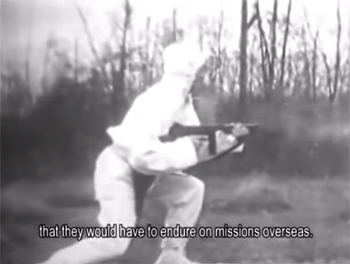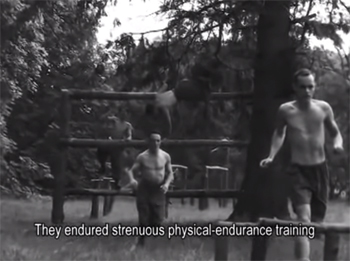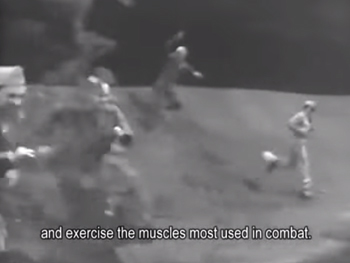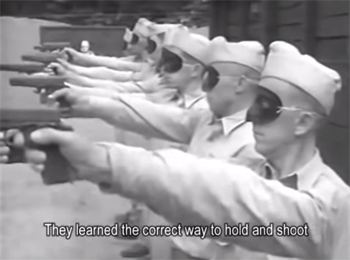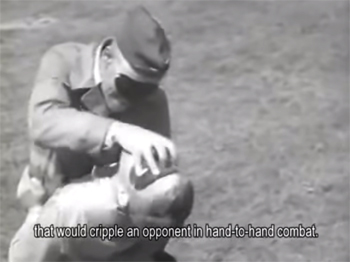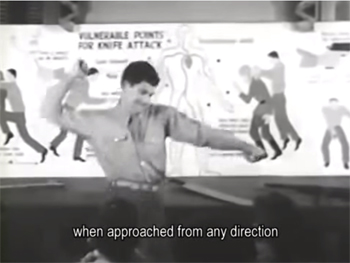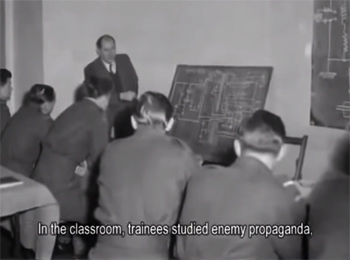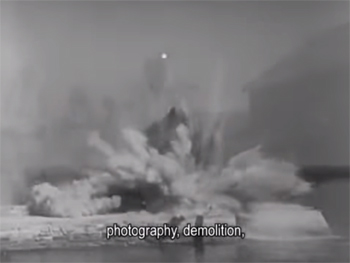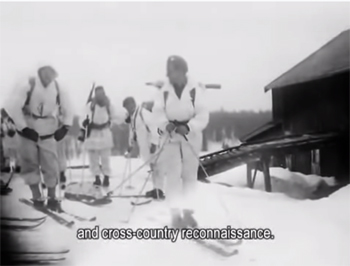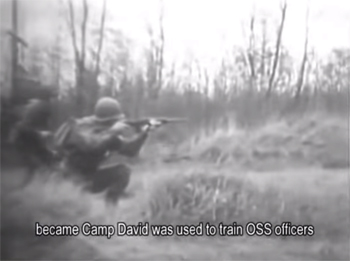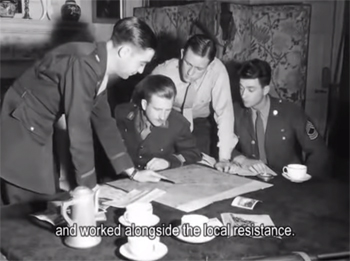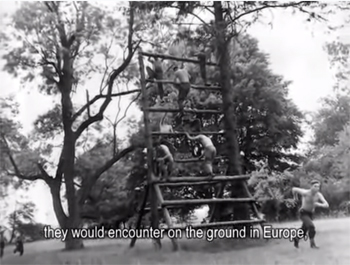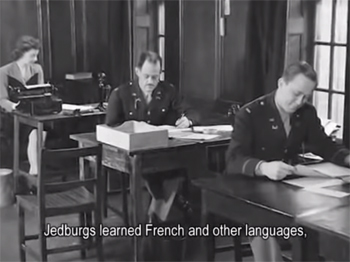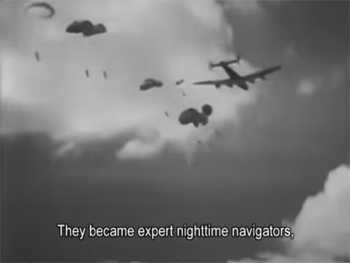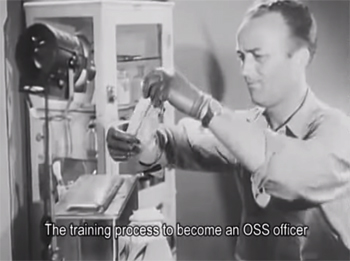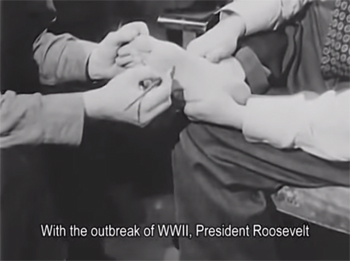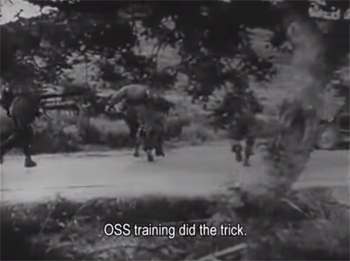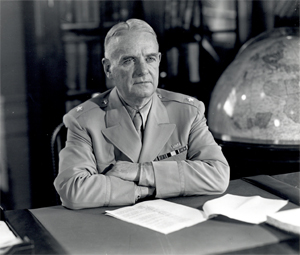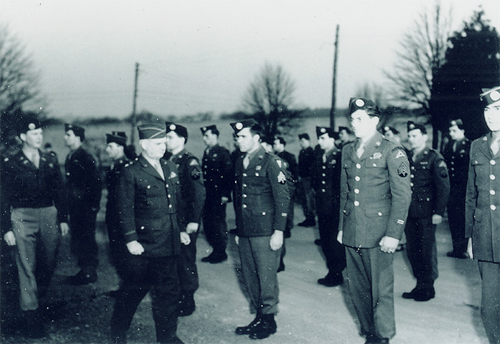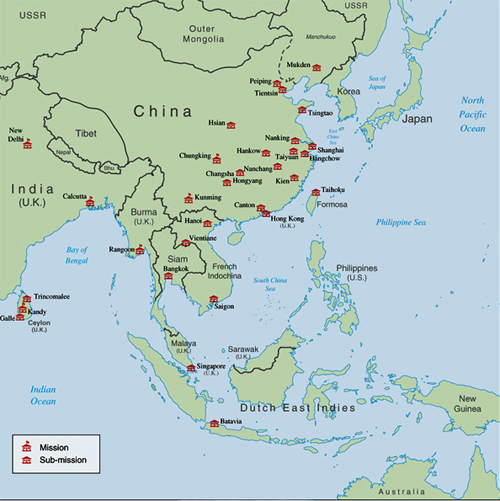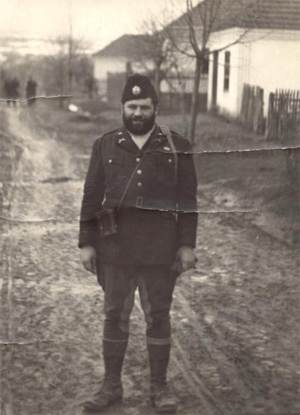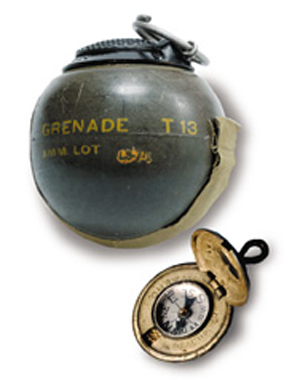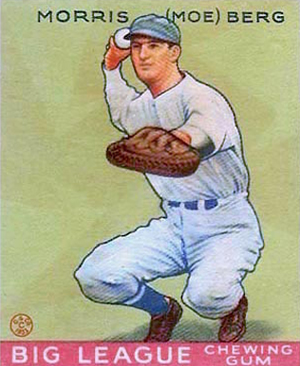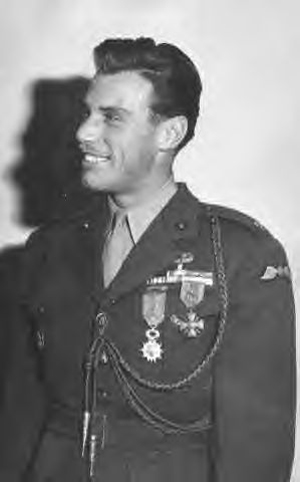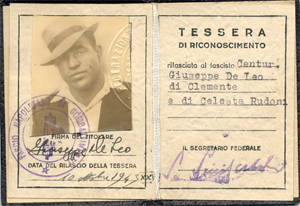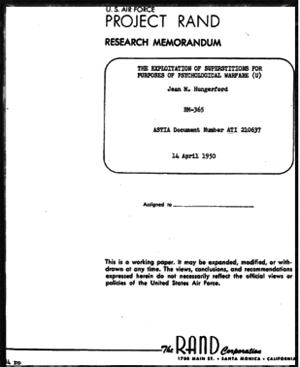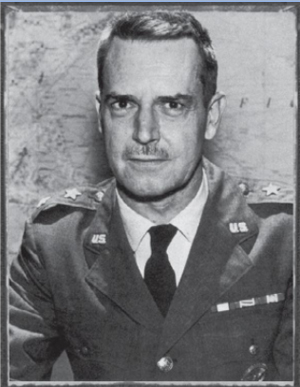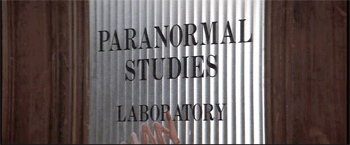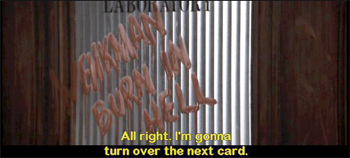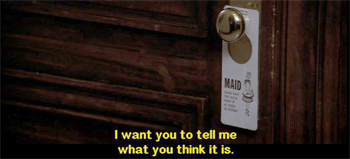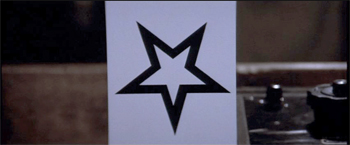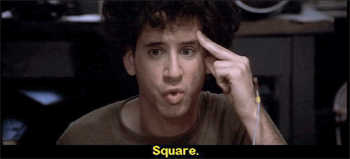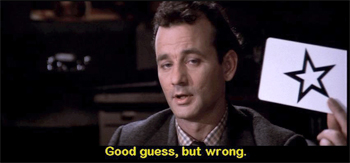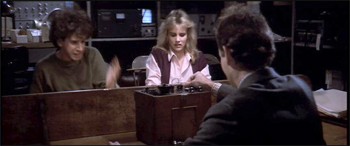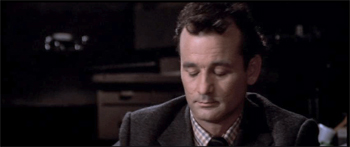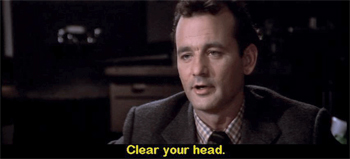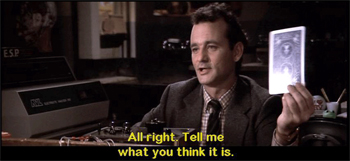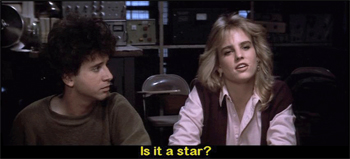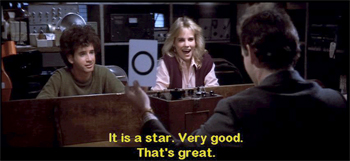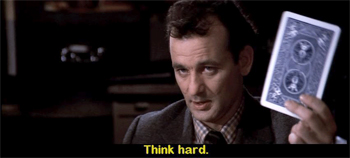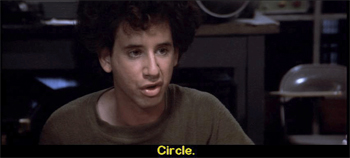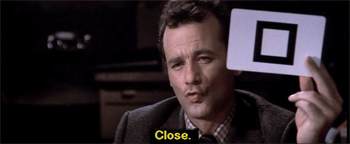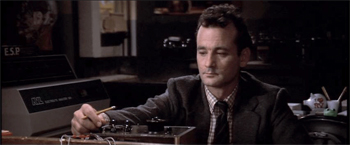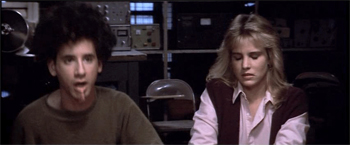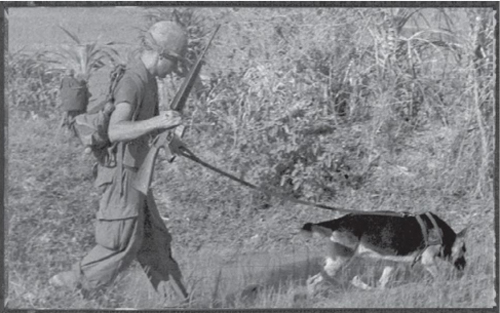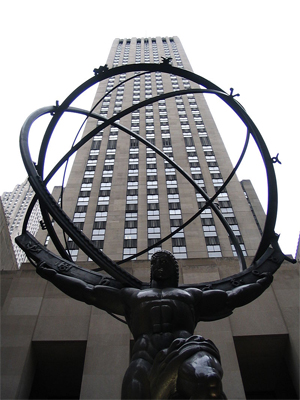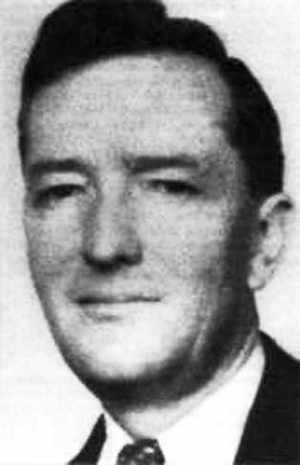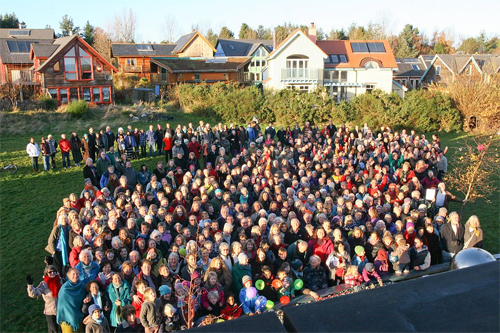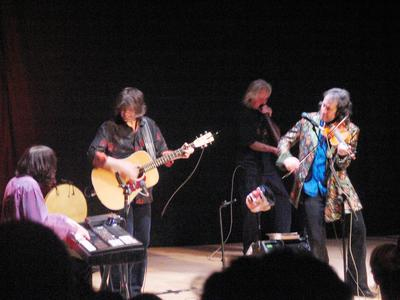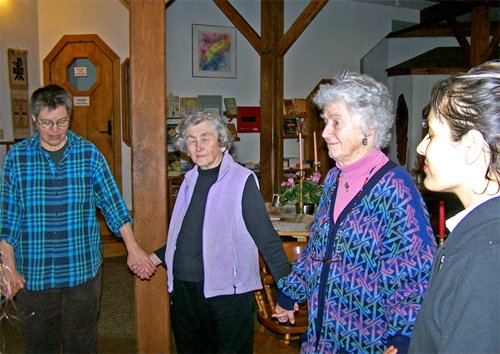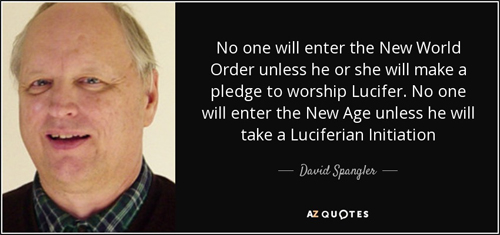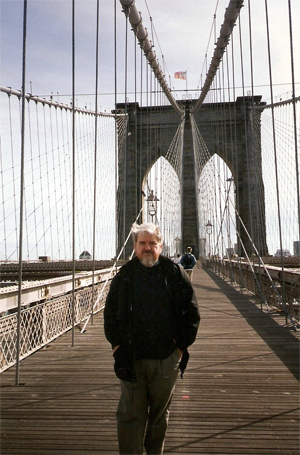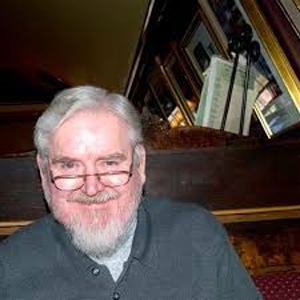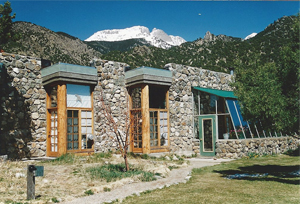Miguel Serrano
by Wikipedia
Accessed: 6/12/20
Miguel Serrano: The Dalai Lama’s “friend” and chief ideologist of “esoteric Hitlerism”
"Miguel Serrano”, writes his interviewer, Isidro Palacios, “was the only [!] western foreigner who traveled to meet the Dalai Lama as the monk-emperor of the Tibetan Buddhists fled from the holy land of Tibet to the south because of the Chinese invasion. Our conversation partner [Serrano] traveled from India into the Himalayas where his meeting with the Dalai Lama took place, and since then a close friendship has existed between him and the now Nobel prize winner” (Palacios, 1990, p. 2). Who is this “close friend” of the Kundun then?
Miguel Serrano was born in Santiago, Chile in 1917. Between 1947 and 1948 he visited Antarctica for the first time, to which he later undertook many journeys. One of the massifs which he explored on an expedition there bears his name today. Between 1939 and 1945 he published the esoteric journal, La Nueva Edad [The New Age]. He was active as a diplomat for Chile in several countries, including India, Yugoslavia, Romania, Bulgaria, and Austria. He also worked as an ambassador at the International Atomic Energy Commission in Vienna and at the United Nations Industrial Development Organization (UNIDO). Largely unnoticed by the public, Serrano has been in friendly contact with numerous prominent national socialist and fascist figures since the seventies: with Léon Degrelle, Otto Skorzeny, Hans-Ulrich Rudel, Hanna Reitsch, Julius Evola, Herman Wirth, Savitri Devi, and the French Waffen SS man and author Saint Loup. The Chilean returned to his country of birth and lives some kilometers from Santiago (as of 1999).
He published numerous books with an occult/poetic content. Even his work best known in the West, in which he recounts his encounters with the German poet Hermann Hesse and the depth psychologist C. G. Jung, displays a great deal of occultist speculation when one reads it attentively. Serrano titled his book The Hermetic Circle: Conversations, Correspondence, and Memories of Hermann Hesse and C. G. Jung. This title alone should signal that the author had formed an esoteric brotherhood with Jung and Hesse, a sort of triumvirate of magicians who had gained admittance to the archetypal storehouses of the human subconscious and are unique in the twentieth century. Jung was sympathetic towards the Chilean who had courted him. He wrote an effusive foreword to Serrano’s tale, The Visit of the Queen of Saba: “This book is unusual. It is a dream amidst other dreams, one could say, and completely different to the spontaneous creations of the unconscious with which I am familiar” (Serrano, 1980, p. 7). Serrano was also a great admirer of the American poet, Ezra Pound, who sympathized with the Italian fascists. Together with Pound’s widow (Olga Rudge) and Prince Ivanici, Serrano had a commemorative stone erected in Italy.
His occult studies took him to all parts of the world. He saw himself as a modern Percival (Parsifal) and Minnesinger, who went in search of the Grail under the protection of his diplomatic passport. “The life of an ambassador is a farce and a folly”, he said in an interview in the journal Cedade, “My post allows me to meet with people of value like the Dalai Lama, Nehru, Indira Gandhi, Hanna Reitsch (Hitler’s famous female war pilot) and others” (Cedade, 1986). Switzerland, Westphalia, the mountains of Salzburg, the Pyrenées, his travels in search of the Grail led him through all these “geomantically” significant sites, but likewise to the Himalayas, Patagonia, and Antarctica.
The Chilean was rightly considered the occult eminence of modern, international fascism. Meanwhile, his phantasmagoric writings have also developed a fanatic following in the German neo-nazi scene: It is the Chilean author’s obsessive intention to convince his readers that Adolf Hitler was an avatar (a divine incarnation) or a tulku, and ever will be, since he lives on in another body in another sphere, that of the kingdom of Shambhala. According to Serrano, the Führer will reappear as the doomsday ruler and fight a terrible battle, and that in the next few years. How did this bizarre fantasy arise?
Shortly after the Second World War a mysterious “master” from the beyond is supposed to have appeared to the Chilean and said to him: “Hitler is a initiate, he can communicate with those dwelling on the astral plane. I do not know who his spiritual leaders are, but I have decided to help him. Hitler is a being with an iron, unshakable will which he inevitably put into effect. He never yielded. I was in contact with him.” (Serrano, 1987, p. 21).
After this appearance of his spiritual guru, Serrano was absolutely convinced that he had been entrusted with the mission of the century: the worldwide dissemination of Hitlerismo Esoterico (of “esoteric Hitlerism”). Whilst still performing his international duties as a Chilean Ambassador he held himself back, although he carried the idea in his heart from the nineteen fifties on. During this period he published books of a poetic/esoteric content with several respectable western publishers which, although they without exception include tantric topics (especially the “female sacrifice”), studiously avoid mentioning the name of Adolf Hitler. Only in 1978 did the Chilean first dare to go public with an open profession of belief in the German Nazi dictator, and published El Cordón Dorado — Hitlerismo Esoterico [The Golden Ribbon — Esoteric Hitlerism]. In the mid-eighties the almost 650-page, large-format book, Adolf Hitler, el Ùltimo Avatâra [Adolf Hitler, the Last Avatar], followed. Serrano summarizes the results of his extensive occult research into this topic with the concise statement that, “esoteric Hitlerism is tantric” (Serrano, 1987, p. 330).
Shambhala: The center of “esoteric Hitlerism”:
In the following sections, we hope to show just how much of his fascist world view Serrano owed to Tantrism. It is of especial interest in connection with this study that he recognized “esoteric Hitlerism” as a central doctrine from the kingdom of Shambhala: “In fact”, the author says, “Shambhala is indeed the center of esoteric Hitlerism. The entrance to it [the realm of Shambhala] was to be found in the vicinity of Shigatse or near Gyangtse [in southern Tibet]. Through my investigations I arrived at the conclusion that our center [i.e., that of Serrano’s occult order] had also been located there. The connection between Hitlerism and the Tibetans or Mongolians was also not immediate, but indirect, in as far as they established contact with the Hyperboreans (the Aryan gods of the north) and made free passage and the transmission of physical messages possible. Tibetans and Mongolians were their vassals who had to guard the magic entry gates to their world. ... When I visited Berchtesgaden [the Obersalzberg to which Hitler retreated time and again], my attention was constantly captivated by a tellurian force, a tangible vibration in the air, which instantaneously linked this point with the Tibetan Himalayas and trans-Himalaya: Hitler’s high-lying refuge with the Lhasa of the Dalai Lama, with Shambhala. For some particular reason, esoteric Hitlerism had chosen this point, which is full of direct connections, magnetic vibrations, and those which touch the stars, as the holy center of its order (the SS), and it had avoided letting a final physical struggle, which could have harmed this area, take place there” (Serrano, 1987, p. 32). In his book, NOS, Serrano defines the kingdom of Shambhala as “one of the hidden subterranean cities in which is performed the tantric initiation that transforms, transmutes and transfigures matter. There are people who say that it was the capital of Agarthi” (Serrano, 1984, p. 186). Before Shambhala was relocated in the Himalayas by the hyperborean (Nordic) siddhas, it was a kingdom at the North Pole.
Shambhala and Agarthi are thus the two occult regions (or cities) from which the national socialist dictator, Adolf Hitler, was sent to our planet. According to Serrano the two locations lie in a magic realm beneath the surface of the Earth. “Thus the submerged Agarthi and Shambhala are to be found there, which the Tibetans and Mongolians speak of as the seat of the king of the world, and also the symbolic orient of the [Knights] Templar and the true Rosicrucians. Thus the unknown leaders of these two orders, as well the organization of esoteric Hitlerism [the SS], betook themselves there. And from there Hitler clearly received instructions” (Serrano, 1987, p. 32).
Following the Second World War the rumor (which Serrano seizes upon thankfully) arose in occult circles that Hitler had settled a brotherhood of Tibetan lamas in Berlin, who stood in direct contact with the kingdom of Shambhala. After the Russians entered the city the members of the order committed suicide ( Ravenscroft, 1988, p. 262ff.).
But Hitler — Serrano says- did not suicide; rather he was able to return to his subterranean home of Shambhala. “Hitler lives. He did not die in Berlin. I have seen him under the earth. ... I kept this secret for many years; then it was dangerous to reveal it, and it was even more difficult to write about it”, the mysterious master we have already mentioned explained to his pupil, Serrano (Serrano, 1987, p. 37). The “Führer”, however, did not flee to Tibet as is assumed in other occult speculations. Serrano doubts such assumptions, since on the basis of his researches he reached the conclusion that the mythic realm of Shambhala was relocated from the Himalayas to the South Pole (Antarctica) following the war and that today the entrance to the underground imperium may be found there. Hitler is thus said to have traveled to Antarctica.
In the near future, the “Führer” with ascend to earth from the subterranean Shambhala (now at the South Pole) for a second time, with a powerful army of UFOs in fact. (At another point Serrano reports that Hitler will lead his army on a white horse, like the Rudra Chakrin, the wrathful wheel turner from Shambhala.) The “last avatar” (Hitler) will plunge the planet into a terrible apocalyptic war between the forces of light (the hyperborean Aryan race) and the powers of darkness (the Jewish race). The Jews, who currently rule the world, will be exterminated and the Nazis will found the Edidad Dorada (the “golden age”) and the “Fourth Reich”.
Serrano took his “fantasies” literally. To seek his spiritual leader (or the tulku Hitler), the Chilean diplomat (in India at the time) set off and began exploring in the Himalayas and in Antarctica. “In the book The Serpent of Paradise, I describe my search for the ashram of the Siddha in the Himalayas, which is likewise to be found beneath the earth in the Kailash mountains, in a very remote area where my master’s residence also is” (Serrano, 1987, p. 40). He was convince that he would find an entrance to Shambhala or Agarthi in the Kailash. He also tried to reach Lake Yamdrok, because he suspected there was an entrance gateway to the underground Shambhala there as well. But the Chinese turned him back at the border.
EL/ELLA:
But the time was not ripe, Serrano was unable to discover the entrance to Shambhala. In Kalimpong, “before the gates of Tibet” he encountered a “man” who assured the Chilean that a mysterious “order” exerts an influence over both the affairs of the distant past and the most recent events of world history. Obviously this man was the guru who — as he recounts in his key book EL/ELLA — initiated Serrano into the rites of sexual magic, and the order was a tantric secret society. Its members, the “man” said, “live in two cities in the Himalayas, Agarthi and Shambhala. To get there one has to trace this (tantric) way back to the origin of time” (Serrano, 1982, p. 10).
The pupil (Serrano) — we read in EL/ELLA — is prepared to go this way and is initiated into the tantras and the “laws of androgyny” by the master: “This knowledge has been passed on to us by the serpent [kundalini] that survived on the ocean floor as the world of the god-men was destroyed, in which the woman was not outside but rather inside and where man and woman were one. .... Until you are one with the woman ... you will be no priest king ... The stallion must become a mare, the man a woman ...” the guru continued his teaching (Serrano, 1982, pp. 11-12).
This is never, the pupil learns, possible through chastity and asceticism. Rather, the man must encounter the woman in the “magic love” in order to divert her feminine energies. As we know, this requires absolute control over the sexual act and above all the retention of the seed: “If the stallion expels the seed, he becomes impoverished by this. ... For as long as the seed flows outwards like a river, the play of the deceptive appearances will continue” (Serrano, 1982, p. 13). In another text it says: “the magic love that is taught in ... Shambhala. ... In it the seed may not be issued outwardly and be lost in the woman, rather it must flow inwardly into the body of its owner in order to impregnate him with the androgyne, ... as one in the likewise symbolic language of alchemy” (Serrano, 1987, p. 289). If the man does not expel his sperm he can absorb the woman’s gynergies completely. “If the woman does not receive”, Serrano says, “she gives! Through her skin she exudes substances, a concentrated energy, which satiates you and penetrates into your blood and heart” (Serrano, 1982, p. 14).
But it can happen that the tantric experiment fails. If the sadhaka (the pupil) loses his seed during the magic sexual act then he is destroyed by the aggressive femininity: “The spider devours the male who fertilizes her, the bees murder the drones, the fearsome mother wears the organ of generation tied around her neck. Everything female devours, every mare, mother, goddess, or woman. In one way or another the man is consumed” (Serrano, 1982, p. 13).
It is thus a matter of life and death. Ultimately, according to Serrano the “killing” of the external woman (the karma mudra) is therefore necessary, so that the inner woman (the maha mudra) can be formed. The author does not shrink from discussing the “tantric female sacrifice” directly: “Only those who are able to love the woman so much [!] that they externally kill her [!] in order to make possible her inner rebirth will find the immortal city of Agarthi (or Shambhala)” (Serrano, 1982, p. 13). For an uninformed reader hidden, but obvious to one who knows the logic of Tantrism, a tantric female murder is described in both of his initiatory writings, EL/ELLA [HE/SHE] and NOS [WE].
In a love scene from EL/ELL,A a young woman expires in Serrano’s arms in order to then re-emerge within him as an inner maha mudra. He bends over her, strokes her hair and kisses her bloody lips: “They tasted like bitter honey, and he swallowed a little of her blood” Then he suddenly sees the stigmata: “Strangely, it [the blood] was only on her feet and the palms of her hands as if she had been crucified. 'Here!', she said. She indicated her side, at breast level. A white line seemed to run through it, like a spear wound” (Serrano, 1982, pp. 72-73). The references to the sacrifice of Christ are obvious, indeed they seem quite blatant. “When I die,” the woman then says, “you will bear me within you; I will be you, live in you ... You have drunk my blood, and we are now two siblings. My character is already being transferred into your blood ... If god will, I shall love you even more when I am dead. ... I have to die that you may live” (Serrano, 1982, pp. 73-74). With this she fulfills the wise saying of Serrano’s master: “The decay of the one [the woman] is the purification of the other [the man]" (Serrano, 1982, p. 93). “The absolute woman”, he says at another point, “can sleep or she can die, which is the same thing” (Serrano, 1987, p. 289).
Written in a fantasy manner, the book NOS — Book of the Resurrection also depicts a tantric female sacrifice. The heroine of this “hermetic biography” is called Allouine, the main hero is admittedly Serrano. Additionally, various “tantric” masters crop up. Among them are, unmistakably, C.G. Jung, Hermann Hesse, and the American poet Ezra Pound. The contents of the book depict the voluntary self-sacrifice of Allouine, her interiorization as a maha mudra by the author (Serrano), and the latter’ achievement of immortality through the absorption of gynergy. “The woman dies. She is dead. She must die. ... She is the warrior’s [the yogi’s] companion, existing only in his mind, in his spirit” (Serrano, 1984, p. 11), Serrano instructs us once more. “She [the woman] becomes interiorized in you through her death, she inspires you”, one of his masters explains to him and in another passage continues: “The secret path of yoga along which you are traveling is only for the warrior, for the initiated hero. It is not the path for the woman; because a woman has no chakras, no kundalini to awaken. ... A woman is the Kundalini. A woman has no soul. She is the soul. A woman has no eternity. She is eternity” (Serrano, 1984, pp. 102, 147).
Serrano stages a tantric séance with Allouine, in which they both consume the five forbidden foods. Then he drinks “the liquor of orgasm ... the heavenly Soma, an spirit of secret wine ... which is now only to be found in the river of your blood” (Serrano, 1984, p. 112). We know that he is talking about the sukra, the mixture of male and female seed, of menstrual blood and sperm. This magic potion grants the Tantric immortality. In NOS too the author longs for the blood of his lover like a vampire and goes into raptures if he detects it on his lips. After he has washed the dying Allouine, he kisses her and drinks of her blood.
Yet Allouine patiently and will-lessly accepts her sacrifice: “My desire for you (i.e., for Serrano) is reaching its peak. The fire of sacrifice has already been lit in my vulva and beats there like a heart. ... My will no longer exists” (Serrano, 1984, p. 111). “The authentic, absolute woman sacrifices herself voluntarily,” we read in NOS, “immolating herself in order to give her eternity to her lover. ... The beloved is now the hidden beloved, she who has died and buried herself in your bones and your veins. The female Sophia, guru of the soul, she who courses through the blood, the female philosopher, Sophia, wisdom, the dove, gnosis” (Serrano, 1984, pp. 147-148). Dying, his “wisdom consort” says to him, “I shall but love thee better after death. I give you my eternity. … My beloved, you will be my coffin of perfumed, precious wood!” (Serrano, 1984, p. 140).
After he has internalized Allouine within himself, the Tantric Serrano can now overcome his EGO, he can now talk of NOS (WE), since his lover (maha mudra) will dwell in him for ever. Through this love, deadly for the woman, the man gains eternal life. In this context, Serrano plays upon the word AMOR, which does not just mean love, but also A-MOR, i.e., beyond death.
Eternally united with Allouine’s gynergy following her physical death, Serrano buries her corpse and places a stone at her grave into which he has chiseled a leftward hooked cross, the supreme symbol of “esoteric Hitlerism”.
Hitler as a tantric and as king of the world (Chakravartin):
From Serrano’s tantric world view it is only all too easy to assume that Hitler (as a tulku) also conducted sexual magic practices with a wisdom consort (mudra). Eva Braun, the lover of the dictator appears to have only partially performed this duty. Behind her, Serrano says, stood a greater one: “We must thus consider the relationship with Eva Braun to have been like that between Jesus and Mary Magdalene in the Christian legend, like that of an alchemist to his mystic sister. ... The presence of the woman, her telepathic, self-communicating energy, the tensions this generates are indispensable for a tantric magician, for this kind of bearer of power. The mystic consort of Hitler was, however, not Eva Braun, but rather another” (Serrano, 1987, p. 25). He refers to her as the “Valkyrie” or as Lilith too. With the name Lilith he draws a connection to Adam. Like Hitler, the biblical first father of humanity (Adam) also possessed two women, an outer Eve and an inner Lilith. Did Hitler perhaps make an decisive tantric mistake, asks the author, in marrying Eva Braun (shortly before his suicide)? “... Since the secret Eve [Braun] of transient flesh and blood was accepted, she now [took] the place of the mystic consort” (Serrano, 1987, p. 25), and Hitler lost part of his magic powers (siddhis).
A according to Serrano the “Führer” of the Third Reich was a tantra master from Shambhala, the “high priest of the occident” (Serrano, 1987, p. 269) He came to earth to fulfill a mission — the control of the world by the Nordic ("hyperborean”) race. But in him Serrano does not just see the incarnation of a warlike archetype who lowered himself into a human frame in the nineteen-thirties and forties. In the dictator he directly recognized a tulku and god sent from Shambhala. Hitler “was a highly developed being, a Bodhisattva, a tulku ... the incarnation of a deity” (Serrano, n.d., p. 119).
Just as a tulku need not only appear in the form of a single person, but can rather produce many emanations of his self, so too the various fascist national “Führers” of the first half of our century were the emanations of the mightiest central tulku and Shambhala prince, Adolf Hitler: Benito Mussolini in Italy; Oliveira Salazar in Portugal; Leon Degrelle in Belgium; José Antonio Primo de Rivera in Spain; Plinio Salgado in Brazil; Doriot in France; Jorge González von Marée in Chile; and Subhash Chandra Bose in India. All the fascist energy of the world was concentrated in the German “Führer” (Hitler): “The tulku”, says Serrano, “ — in this case it is Hitler — radiates out from a center of higher power, which like an enormous sun absorbs everything and draws it into his fire and his fate. If HE falls, then all the others fall too, then HE is of course ALL [of them]" (Serrano, 1987, p. 270).
According to Serrano Hitler must also be seen as the earthly appearance of the Chakravartin: “For the initiates of the SS Hitler was that mysterious prophet or magician who … would restore the sense of royal dignity, where the king of the world is the emperor, the priest of priests and king of kings; it is the leader, who will establish a new golden age for a thousand years and more” (Serrano, 1987, p. 354). This is clearly intended for the future, since– according to Serrano — Hitler will soon return once more to fulfill his cosmic mission. One may think what one will of such prognoses, but it is in any case amazing what a large upturn fascist movements have achieved worldwide since the end of the eighties.
The SS as a tantric warrior order from Shambhala:
For Serrano the tantric initiation is the central rite of a “hyperborean” (Nordic) warrior caste. Shambhala counts as the supreme mystery site for the initiation of the “priest-warriors”. “In Shambhala”, the author says, “ the use of the force through which the mutation of the earth and the people can be carried out is taught, and the latter [the people] are introduced into the martial initiation, which makes this possible. ... Those who follow this initiatory stream have struggled to found a new/old order here on the present-day earth which has its roots in the transcendent origins, with the goal of reawakening the golden age, and they will fight on to the end...” (Serrano, 1987, p. 258).
This order is the secret brotherhood of the Shambhala officers, who have for centuries been incarnated in our world — for instance as knights of the holy grail or as Rosicrucians or finally as the occult elite of the SS, Hitler’s notorious Schutz-Staffel. “Once a year”, we learn, “the inner circle of the SS people met with their supreme leaders for a few days of retreat, the solitude, and meditation. A kind of western yoga was practiced here, but nothing is known about it” (Serrano, 1987, pp. 171-172).
According to Serrano the SS were divided into two sections, an inner esoteric one and an outer one. The “exoteric SS” were selected to “be able to deal with the most difficult tasks and adventures in the external world”. “Nothing of the esoteric of the black order, its practices and teachings, its invisible connections and its occult doctrines was known” to them (Serrano, 1987, p. 264). The “inner circle” of the SS consisted of “sun people, supermen, god-men, the total human, the human magician” (Serrano, n.d., p. 96). The esoteric SS were siddhas (magicians) from the underground kingdom of Shambhala, or at least their messengers In German, SS are the initials of the “black sun” (“schwarze Sonne”), and Serrano did also call the members of the order “the men of the black sun”. We are reminded that the planet of darkness, Rahu, which darkens the sun and moon, is also referred to in the Kalachakra Tantra as the black sun.
The author is convinced, of course, that sexual magic rites were practiced in the SS (the “new aristocracy of the Aryan race”). Like Julius Evola before him, the Chilean makes constant references in his writings to how sexuality may be converted into high-quality aggressive military energy and political power through tantric practices: “Come and take me like a warrior!”, a lover (his karma mudra) says to him at one stage in his key novels, “I give you my heart for you to devour. Let us drink our blood”(Serrano, 1982, p. 54). In EL/ELLA the author recommends to heroes initiated into the tantras that “the warrior should give death the face of his lover; the fiery femininity of death will be thus evoked” (Serrano, 1982, p. 87). For Serrano, tantric practices and the cult life of a fascist/esoteric warrior caste are one.
Additionally, the sexual magic of the SS was connected with racial experiments. These aimed at a mutation of the human race, or better, a regaining of the formerly high-standing Aryan god-men who had in the dim and distant past tarnished themselves through “ordinary” sexual intercourse with human women and produced a lesser race. According to Serrano, such experiments were conducted in the Wewelsburg, the occult center of the SS. “Laboratories of leftward magic” for the re-creation of the original, pure Aryan race were to be found there (Serrano, n.d. pp. 488, 589). But these were nothing more than the above-ground branches of corresponding establishments in subterranean Shambhala. “In Shambhala they attempted to produce a mutation of their kind which would allow them to return to that which they were before their interbreeding with the sons of man...” — when they still had a white, almost transparent body and blonde hair (Serrano, 1982, p. 54).
As Tantrics, the SS were “beyond good and evil” and for this reason their “terrible deeds” were justified by Serrano, plus that they took place at higher cosmic command (Serrano, 1987, p. 331). The “final solution to the question of the gypsies” (many gypsies perished in the concentration camps), for example, is said to have come directly “from Tibet to Hitler, certainly from Shambhala”. The gypsies used to live in Shambhala and had then been driven out of there. “The reasons for this”, says Serrano, “were known in the Tibet of the Dalai Lama” (Serrano, 1987, p. 366).
Just like the Knights Templar, the inner occult core of the SS were incarnations of the guardians of the holy grail, and “the grail of the siddhas [the magicians], of the solar and martial initiations” is to be found in Shambhala (Serrano, 1987, p. 264). The miracles which radiated from the grail were evident in the achievements of the black order in the course of the Second World War: “If one examines the achievements of the followers of Hitler in all areas of creation within a period of just six years, one cannot avoid admiring this miracle and making a comparison with the Templar order. And one comes to believe that the SS have likewise found the grail and even deciphered it” (Serrano, 1987, p. 278). Even the monumental architecture of the Third Reich is supposed to have been prepared on the building sites of Shambhala. The Hyperboreans (the gods of the north), we may read, “emigrated to two secret cities in the Himalayas, Agarthi and Shambhala. ... In Shambhala they practiced the magic of the giants which made the monumental buildings possible” (Serrano, 1982, p. 54).
In the Second World War the forces of light and the “sun race” (Hitler and the SS) stood opposed to the forces of darkness and the “moon race” (the Allies and the Jews). It was no ordinary war, but rather a global battle between the gods (the Nazis, the light Aryan race) and demons (the Jews, the dark Semitic race), between Odin, the highest god of the Germanic peoples, and Jehovah, the highest god of the Jews. The Nordic (hyperborean) heroes fought the “lord of darkness”, the “satanic demiurge”. At heart, Serrano says, the patriarchal and matriarchal powers were at war.
Admittedly Hitler outwardly lost the war, but through his sacrifice and his example he saved the ideals of the warrior caste from Shambhala. He shall return at the head of his “wild army” to finally liberate the white race from the lord of darkness (Jehovah). It will then come to a terrible final battle. “These are the dimensions of Hitler, the envoy of the hyperborean [Nordic] siddhas, the tulku, the Bodhisattva, the Chakravartin, the Führer of the Aryans, so that the demiurge Jehovah has to mobilize all his earthly and extraterrestrial legions” (Serrano, n.d., p. 50).
One may well dismiss Serrano’s visions as the product of an overactive imagination, but it cannot be denied that modern fascism has found a home and a predecessor in the Shambhala myth and in Tantrism. Its mythological conceptions and visions of power can without difficulty be brought into harmony with the practice and political ideology of the Kalachakra Tantra for all fundamental issues. The occult right wing’s move toward Tibetan Buddhism is thus in no way to be understood as the exploitation of the dharma for ignoble purposes, since there is a profound inner relatedness between these two ways of looking at the world.
The Fourteenth Dalai Lama and Serrano:
Naturally, the Fourteenth Dalai Lama would simply dismiss any link between the Shambhala myth and Kalachakra Tantra and the “esoteric Hitlerism” of Serrano, regardless of how closely matched even the conceptual principles of the two systems may be. Nonetheless, it is of great interest to our culturally critical study that the Kundun met with the racist Chilean several times (in at least 1959, 1984, and 1992). When His Holiness visited Chile in the year 1992, he was greeted at the airport by, among others, the leader of the National Socialist Party of Chile — Miguel Serrano by name. The principal ideologue of Esoteric Hitlerism told the reporters present that he and the hierarch from Tibet had been good “friends” since his time in India (Grunfeld, 1996, p. 302). Serrano was also a friend of the German living in India whom we have so often cited, Lama Govinda, in whose meditation tower with a view of the Himalayan mountains he was able to immerse himself.
The first encounter with the Kundun took place in 1959. In his own account, the founder of “esoteric Hitlerism” was the sole foreigner to greet the Dalai Lama as he crossed the Indian border after his flight from Tibet. “Shortly before the taking of Tibet by Mao’s troops”, he reports in his own words, “the Dalai Lama succeeded in fleeing to India. I journeyed into the Himalayas to wait for him there. I donned Tibetan clothes which the Maharaja of Sikkim had given me so as to attempt to get to Tibet from there. I made it to the Tibetan border, where — incidentally — I made the acquaintance of one of Roerich’s sons who also gave me a report of the hidden city lying in the mountains (Shambhala). The at that time still very young Dalai Lama later, when everything was over, gave me a small Tibetan dog, as a sign of his gratitude” (Palacio, 1990, p. 4).
It is at any rate interesting that the Kundun, who was introduced to western culture by a member of the SS (Heinrich Harrer), meets as the first (!) Westerner after his crossing of the Indian border the fascist Miguel Serrano, who sees a mythic command from the kingdom Shambhala at the esoteric core of the SS. Serrano says of himself: “I was employed as a tool and continue to be used” (Cedade, 1986). We may recall that upon crossing the border, the Dalai Lama gave vent to the cry of “Victory to the gods!”. The gods that Serrano represented and as whose tool he served were Wotan, Odin, and, in his own words, Adolf Hitler.
Miguel Serrano and the XIV. Dalai Lama in Santiago de Chile (1992)
As far as the “enchanting” Tibetan temple bitch of “honey yellow color” which was given him by the Kundun is concerned, this creature had a most special significance for the Chilean. The lamas, the author says, referred to the petite race as the “lion of the back door of the Temple”. Serrano’s “back door lion” was called Dolma, “the name of a Tibetan goddess; in truth the shakti” (Serrano, n.d., p. 189). Dolma is the Tibetan name for the goddess Tara. As abstruse as it may sound, after some time the Chilean recognized in the Dolma given him by the Kundun the reincarnation of a woman whom he once loved as a “mystic partner” and who (in accordance with the laws of the “tantric female sacrifice”) had had to die (Serrano, n.d., p. 189). As Dolma the bitch one day passed away in his arms — Serrano had flown from Spain to Vienna just to accompany her into eternity — he recalled an event of mythological dimensions from the 16th century. As if he were in a trance he suddenly felt that it was not the Tibetan Dolma but rather the dying sister of the last Aztec emperor Montezuma, Papán by name, whom he held in his arms. Papán — Serrano claimed — originally a high priestess from the north ("Hyperborea”), had in Mexico prophesied- according to legend — the return of the white gods to America. In her final hour, Dolma (the bitch) radiated out the energy of the Aztec princess who had to suffer a ritual sacrificial death.
Thanks to this vision Serrano could once more experience the fascination which habitually flooded through him at the embrace of dying women, even if one of them had this time been incarnated in a bitch. In NOS, a dying dog (the fate of Dolma probably lies behind this) spoke to him like a tantric lover with a human voice: “You don't need me outside anymore. I will howl inside you, like my brother the wolf” (Serrano, 1984, p. 21).
Such central “hermetic” experiences naturally tied the Chilean to the Kundun and his tantric world view profoundly and so it is also not surprising that Serrano linked “esoteric Hitlerism” and the fate of Germany to the Dalai Lama directly: His “skill”, the author says of the Fourteenth Dalai Lama, is “closely linked to that of Hitler’s Germany ... on account of yet undiscovered connections. A few years after Germany, Tibet also fell” (Serrano, 1987, p. 366).
The Chilean did not yet know about the SS past of Heinrich Harrer, the Kundun’s “best friend” and teacher, since this first became known in 1997 in connection with the film Seven Years in Tibet. But we can be certain that this fact would have been cited by him as further evidence to justify an occult connection between Shambhala and the SS, between the Dalai Lama and Adolf Hitler, particularly as the Chilean indicates at many points in his writings that the SS sent “secret missions” to Tibet in order to search for traces of the Aryan race there.
Serrano allows himself to be celebrated as the “Führer” of the National Socialist Party of Chile. His calendar commences with the year of Adolf Hitler’s birth in 1889. He describes “esoteric Hitlerism” as the “new religion of the young heroes and future warriors and priests, the true myth of the coming century” (Cedade, 1986). In 1989, on the 100th anniversary of Hitler’s birth (the year 100 for Serrano) a commemorative celebration was staged at which the Chilean and representatives of “esoteric Hitlerism” from various countries (Chile, Spain, Italy, Germany) spoke: “On the peak of a mountain in the Andes ranges which dominates Santiago,” the Chilean newspaper, La Epoca, writes, “and to the sounds of the Ride of the Valkyrie from Wagner’s Der Ring des Nibelungen (The Ring of the Nibelung), some 100 Chilean followers and foreigners commemorated Adolf Hitler in yesterday’s evening twilight and promised that in the new Hitlerist age the continuing triumph of his ideas would proceed from Chile. ... Hitler, Serrano opined, would be resurrected from in the Andes ('Andes' means 'perfected, total human) and he would do like the Caleuche [a mystic hero of Chile, whose name means 'the man who returns’) and introduce the age of Hitler” (Epoca, April 21, 1989). This event should not be underestimated on the basis of the small number of participants. For Serrano it had a ritual/symbolic significance and was reported in detail in the German neo-Nazi scene, for example.
In fascist circles worldwide, Serrano is a “hot tip” and his bizarre visions do in fact exercise a fascinating attraction on many young people. His nazi books are openly offered for sale in all South American countries. The German translation of Cordón Dorado Hitlerismo Esoterico is available as a hardback (Das goldene Band — esoterischer Hitlerismus). Highly sought after copies of the other works (about Hitlerism) in German translation and individual propaganda essays are in circulation and passed from hand to hand. “Serrano’s mystical neo-Nazism … [has] a distinct appeal to the younger generation”, writes the historian Goodrick Clark, “Here Nazism becomes a pop mythology, severed from the historic context of the Third Reich. The Gnostic Cathars, Rosicrucian mysteries, Hindu Avatars, and extraterrestrial gods add a sensational and occult appeal to powerful myths of elitism, planetary destiny, and the cosmic conspiracy of the Jews that culminate in a global racist ideology of white supremacism. … Books by Serrano … are now circulating among neo-pagans, Satanists, skinheads, and Nazi metal music fans in the United States, Scandinavia, and Western Europe” (Goodrick Clark, 1998, pp. 221-222). The Dalai Lama has never distanced himself from Serrano. Instead of decisively opposing fascism in any country, he recently called for the former Chilean State President and fascist, Augusto Pinochet, to be spared a trial.
-- The Shadow of the Dalai Lama: Sexuality, Magic and Politics in Tibetan Buddhism, by Victor and Victoria Trimondi
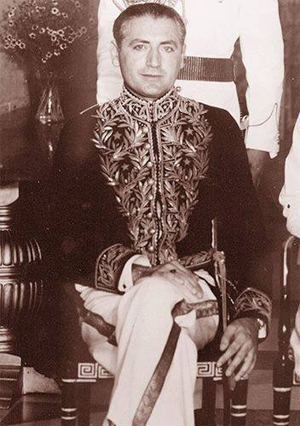
Miguel Serrano Fernández
As ambassador to India, 1957
Born: Miguel Joaquín Diego del Carmen Serrano Fernández, 10 September 1917, Santiago, Chile
Died: 28 February 2009 (aged 91), Santiago, Chile
Resting place: Santiago, Chile
Nationality: Chilean
Alma mater: Internado Nacional Barros Arana
Occupation: Writer, novelist, essayist, journalist, explorer and diplomat
Years active: 1936–2009[1]
Notable work: The Serpent of Paradise"; "The Ultimate Flower"; "El/Ella"; "The Visits of the Queen of Sheba"; "C.G. Jung and Hermann Hesse: A Record of Two Friendships"; "Nos: Book of the Resurrection"
Miguel Joaquín Diego del Carmen Serrano Fernández, better known as Miguel Serrano (10 September 1917 – 28 February 2009), was a Chilean diplomat, writer, occultist, and fascist activist. A Nazi sympathiser in the late 1930s and early 1940s, he later became a prominent figure in the neo-Nazi movement as an exponent of Esoteric Hitlerism.
Born to a wealthy Chilean family of European descent, Serrano was orphaned as a child and raised by his grandmother. After an education at the Internado Nacional Barros Arana, he developed an interest in writing and far-right politics, allying himself with the Chilean Nazi movement. During the Second World War, in which Chile remained neutral, Serrano campaigned in support of Nazi Germany and promoted anti-semitic conspiracy theories through his own fortnightly publication, La Nueva Edad. In 1942 he joined an occult order founded by a German migrant which combined pro-Nazi sentiment with ceremonial magic and kundalini yoga. It presented the Nazi German leader Adolf Hitler as a spiritual adept who had incarnated to Earth as a savior of the Aryan race and who would lead humanity out of a dark age known as the Kali Yuga. Serrano became convinced that Hitler had not died in 1945 but had secretly survived and was living in Antarctica. After visiting Antarctica, Serrano travelled to Germany and then Switzerland, where he met the novelist Hermann Hesse and psychoanalyst Carl Jung; in 1965 he published a reminiscence of his time with the pair.
In 1953 Serrano joined the Chilean diplomatic corps and was stationed in India until 1963, where he took a keen interest in Hinduism and wrote several books. He was later made ambassador to Yugoslavia and then Austria, and while in Europe made contacts with various former Nazis and other far-rightists living on the continent. Following Chile's election of a Marxist President, Salvador Allende, Serrano was dismissed from the diplomatic service in 1970. After Allende was ousted in a coup and Augusto Pinochet took power, Serrano returned to Chile in 1973. He became a prominent organiser in the Chilean neo-Nazi movement, holding annual celebrations of Hitler's birthday, organising a neo-Nazi rally in Santiago, and producing a neo-Nazi political manifesto. He wrote a trilogy of books on Hitler in which he outlined his view of the Nazi leader as an avatar. He remained in contact with neo-Nazis elsewhere in the world and gave interviews to various foreign far-right publications.
In 2008 Serrano was awarded the Lifetime Achievement Award (Premio a la Trayectoria) from the Universidad Mayor of Santiago.[2][3][4] After Savitri Devi, he has been considered the most prominent exponent of Esoteric Hitlerism within the neo-Nazi movement. In that movement, he gained respect for his devotion to the cause even among neo-Nazis who regarded his ideas as far-fetched.
Biography
Childhood: 1917–1938
Miguel Joaquín Diego del Carmen Serrano Fernández was born on 10 September 1917.[5] On his maternal line, he was descended from the countesses of Sierra Bella.[5] His mother, Berta Fernández Fernández, died when Serrano was five years old, while his father, Diego Serrano Manterola, died three years later.[5] He had two younger brothers and a sister, who were then all raised by his paternal grandmother, Fresia Manterola de Serrano, moving between a Santiago townhouse and a 17th-century country mansion in the Claro Valley.[5]
Between 1929 and 1934, he studied at the Internado Nacional Barros Arana.[5] The school had been heavily influenced by Prussian staff members who had arrived in the late 19th century, with Serrano attributing his later Germanophilia to this early exposure to German culture.[5] At the school he moved in literary circles.[5] A close friend of his was Hector Barreto, a poet and socialist. Aged 18, Barreto was killed in a brawl with uniformed Nacistas, members of the National Socialist Movement of Chile, a fascist group inspired by the example of the Nazi Party in Germany.[5] This event encouraged Serrano's involvement in left-wing politics as he began to take an interest in Marxism and the Chilean Marxist movement.[5] He wrote articles for leftist journals like Sobre la marcha, La Hora, and Frente Popular.[5] His uncle, the poet Vicente Huidobro, encouraged him to join the left-wing Republicans in the ongoing Spanish Civil War, but he did not do so.[5]
Nazism and occultism: 1939–1952
Serrano grew critical of Marxism and left-wing politics, instead being drawn to the Nacistas after their failed coup in September 1938.[5] By July 1939, Serrano was publicly associating himself with the Nacista movement, now organised as the Popular Socialist Vanguard.[6] He began writing for their journal, Trabajo, and accompanied their leader, Jorge González von Marées, on his speaking tours across Chile.[6] At the outbreak of the Second World War, in which Chile remained neutral, Serrano expressed support for Nazi Germany; from July 1941 he launched a fortnightly pro-Nazi publication, La Nueva Edad.[6] Among the magazine's regular contributors were the journalist René Arriagada, General Francisco Javier Díaz, and Hugo Gallo, who was the cultural attaché at the Italian Embassy.[6] Through this work, Serrano developed close links with the German Embassy in Chile and its personnel.[6]
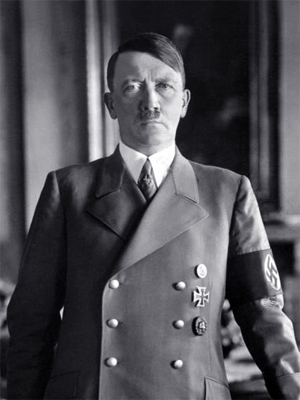
Serrano admired Adolf Hitler, and later became convinced that he had not died in 1945 but instead escaped to Antarctica.
Although Serrano had initially shown little interest in Nazi attitudes towards Jewish people, he became increasingly interested in anti-semitic conspiracy theories about Jews manipulating world events.[6] Two Chilean artists gave him a Spanish language translation of the Protocols of the Elders of Zion, a text purporting to expose this alleged international Jewish conspiracy.[6] According to the historian Nicholas Goodrick-Clarke, it was this discovery of the Protocols which "marked a crucial point in the development of Serrano's Nazism".[6] From November 1941, he began printing excerpts from the Protocols in La Nueva Edad.[6]
Serrano also developed an interest in forms of religious or spiritual practice, including both Western esotericism and Hinduism.[7] In late 1941, Gallo suggested that Serrano could support the German and Italian war effort not just through his publications, but also on the etheric Inner Planes, introducing him to an esoteric order sympathetic to Nazism.[7] Serrano later claimed that this order had been founded near the start of the 20th century by a German migrant known as "F. K."[7] Serrano was initiated into the group in February 1942.[7]
F. K. claimed that the group owed its allegiance to a secretive Brahmin elite who resided in the Himalayas.[7] It practices combined kundalini yoga with ceremonial magic and expressed a pro-Nazi position.[7] It espoused a belief in an astral body which could be awakened through various rituals and meditative practices.[7] The group revered the Nazi German leader Adolf Hitler as the savior of an Aryan race and presented him as a shudibudishvabhaba, an initiate of immense willpower who had voluntarily incarnated onto Earth to assist in the overthrow of the Kali Yuga, a present dark age for humanity.[7] F. K. claimed that through the astral realm, he was able to establish a connection with Hitler, during which they had various conversations.[7]
As the Second World War ended in defeat for Nazi Germany in 1945, Serrano was convinced that Hitler had not committed suicide in Berlin as was claimed by the victorious Allies. Instead, Serrano believed that Hitler had escaped and was living in Antarctica, either in a secluded warm environment on the continent or under the ice cap itself.[7] This idea had been suggested to him by F. K.—who claimed that he remained in astral contact with Hitler—but was also widely rumoured in the Latin American press.[8] In 1947, Ladislao Szabó's book Hitler est vivo had been published, exerting an influence on Serrano. Szabó's book alleged that a U-boat convoy had taken Hitler to safety in Queen Maud Land.[9] In 1947–48, Serrano travelled to Antarctica as a journalist with the Chilean Army.[9] In 1948, he wrote his own short book, La Antártica y otros Mitos, which repeated Szabó's claims about Hitler's survival.[9]
In 1951, Serrano travelled to Europe, and in Germany visited various sites associated with the Nazi Party, including Hitler's Berlin bunker, Hitler's Berghof home, and Spandau Prison, where Rudolf Hess and other prominent Nazis were then imprisoned.[9] During this trip he also visited Switzerland, where he met and befriended the writer Hermann Hesse and the psychoanalyst Carl Jung.[9]
Diplomatic career: 1953–1970
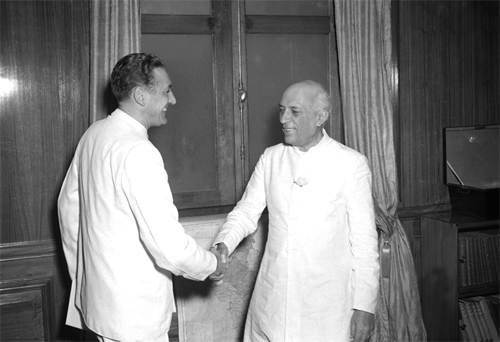
Serrano meeting Indian Prime Minister Jawaharlal Nehru (right) in May 1957
In 1953, Serrano—following a number of other family members—joined the Chilean diplomatic corps.[9] He hoped to gain a posting to India, a land which he considered to be a source of great spiritual truths. He was successful in this, and remained in India until 1962. In this period, he visited many Hindu temples and searched for evidence of the secretive Brahmanical order into which F. K. had alleged initiation.[9] In his role as a diplomat, he met various prominent figures, including Jawaharlal Nehru, Indira Gandhi, and the 14th Dalai Lama.[9] It was while in India that he wrote and published two books: The Visits of the Queen of Sheba (1960), which had a preface by Jung, and The Serpent of Paradise (1963), which discussed his experiences in the country.[9] Serrano had engaged in further correspondence with Jung between 1957 and 1961.[10] In 1965 his book, C. J. Jung and Hermann Hesse: A Record of Two Friendships, was published.[10]
Leaving India, from 1962 to 1964 he was posted as the Chilean ambassador to Yugoslavia.[9] From 1964 to 1970 he then served as his country's ambassador to Austria, for which he lived in Vienna.[9] During the latter posting, he also represented Chile at the International Atomic Energy Agency and the United Nations Industrial Development Organization, both of which were based in Vienna.[9] While in Europe, he had sought out a number of individuals linked to Nazism and to the far-right more broadly; these included visits to the Ahnenerbe co-founder Herman Wirth,...
Herman Wirth (alternatively referred to as Herman Wirth Roeper Bosch, or Herman Felix Wirth or Hermann) (6 May 1885 in Utrecht – 16 February 1981 in Kusel) was a Dutch-German historian and scholar of ancient religions and symbols. He co-founded the SS-organization Ahnenerbe but was later pushed out by Heinrich Himmler....
In 1914, at the outbreak of World War I, Wirth volunteered for military service in the German army, where he was assigned to monitor the Flemish separatists in German-occupied Belgium. In 1916 he was decorated, dismissed from the service, and subsequently appointed by Wilhelm II as a professor (Titularprofessor). In 1918 he became professor at the Royal Conservatory of Brussels. After the war ended, he and his wive moved to the Netherlands, where they founded a nationalist Wandervogel-organization, dedicated to traditional folk-music. By then, Wirth accepted a temporary job as teacher at the gymnasium of Baarn.
August 1922 he became honorary professor in Marburg, Germany, but he took another job as a teacher in Sneek (Netherlands) until February 1924. This gave him the opportunity do dive into Frisian folk culture and the history of the apparently age-old Oera Linda Book [a manuscript written in a form of Old Frisian, purporting to cover historical, mythological, and religious themes of remote antiquity, from 2194 BCE to 803 CE. Among academics in Germanic philology, the document is widely considered to be a hoax or forgery.] In 1925 he joined the NSDAP. However, his membership was discontinued in 1926, apparently because he did not want to scare off Jewish sponsors.
Wirth then published a book about the "Prehistory of the Atlantic Nordic race" (German: Urgeschichte der atlantisch-nordischen Rasse), which found appeal in völkisch circles....
After the rise to power of the NSDAP, he rejoined the party in 1934 and shortly thereafter became a member of the Schutzstaffel (SS, membership number 258.776). He was re-awarded his former NSDAP number (20.151) personally by Adolf Hitler.
In early summer 1933, friends within the NSDAP helped Wirth to be appointed to an extraordinary professorship without teaching responsibilities at the theological faculty of Berlin University.... Wirth also re-founded his organization as Gesellschaft für germanische Ur- und Vorgeschichte, with assistance from the journalist and Nazi functionary Johann von Leers and the industrialist Ludwig Roselius. The latter had supported Wirth since the 1920s and paid for the publication of Der Aufgang der Menschheit.
Between 1933 and 1935, there was a large philosophical clash encouraged by the Nazi party between the churches, and neo-paganism supported by völkisch theories. Wirth was among those who tried to reinterpret Christianity in terms of ethnic Nordic origin of original monotheism. The free-thinking neo-pagans founded a supporting group in 1933, and included Wirth, Jakob Wilhelm Hauer, and until 1934 Ernst Bergmann and numerous ex-Communists....
From 1935, sponsored by Himmler and Darré, Wirth co-founded and then headed the Ahnenerbe, which was to "research German ancestral heritage", of the SS. [The Ahnenerbe operated as a think tank in Nazi Germany between 1935 and 1945. Heinrich Himmler, the Reichsführer of the Schutzstaffel (SS) established it as an SS appendage devoted to the task of promoting the racial doctrines espoused by Adolf Hitler and his governing Nazi Party, specifically by supporting the idea that the modern Germans descended from an ancient Aryan race seen as biologically superior to other racial groups. The group comprised scholars and scientists from a broad range of academic disciplines.] In 1937, Himmler restructured the Ahnenerbe, made Wirth the "Honorary President" with no real powers and replaced him as president with Walter Wüst. In 1938, Wirth also lost his department within the Ahnenerbe and in 1939 he lost his position as Ehrenpräsident.
Wirth continued his research, repeatedly financed by Himmler; both men remained in touch. Wirth remained an SS-officer...
Captured in 1945 by the U.S. Army, Wirth was detained and interviewed for two years. Feeling unwelcome in the Netherlands, he then moved to Sweden, before returning to Marburg in 1954, where he lived as a private scholar.
Although he continued to defend National Socialist principles, Wirth's teachings about "Urkulturen" found resonance in the evolving alternative scene, and in the 1970s gained support from North American native groups....
The influential Chilean neonazi Miguel Serrano interviewed Wirth in September 1979. According to Serrano, Wirth complained to him that his magnum opus Palestinabuch had recently been stolen. There are, indeed, indications that Wirth has worked between 1933 and 1969 on an antisemitic text, which could serve as a counterpart to the Ura Linda Chronicle. Since then, due to the publications of Serrano and the Russian philosopher Aleksandr Dugin, the idea of a lost major manuscript has gained some kind of cult status in extreme rightwing circles....
Wirth claimed that civilization is a curse that only a simpler way of life, as documented in archaeological findings and historical records, could lift....
Wirth placed the origins of European civilization on the mythological island of Atlantis, which he thought had been located in the North Atlantic, connecting North America and Europe. Its inhabitants supposedly were pure Aryans, influencing the cultures not just of Europeans but also of the natives of North America and the wider "Old World" beyond Europe. According to Wirth, these Atlanteans worshipped a single deity whose aspect changed with the seasons and its son, the Heilsbringer. In their religion, priestesses played a key role. Wirth thought that both the Jewish and the Christian faith were perversions of this original religion. He considered himself a symbologist and thought the Germanic people to be direct descendants of these inhabitants of Atlantis.
-- Herman Wirth, by Wikipedia

